How Google Works - An inspirational journey
This book have a lot of “ah”, “oh”, which I cannot do anything else but agree. So I will mostly quote statements from it that would best demonstrate my thoughts.
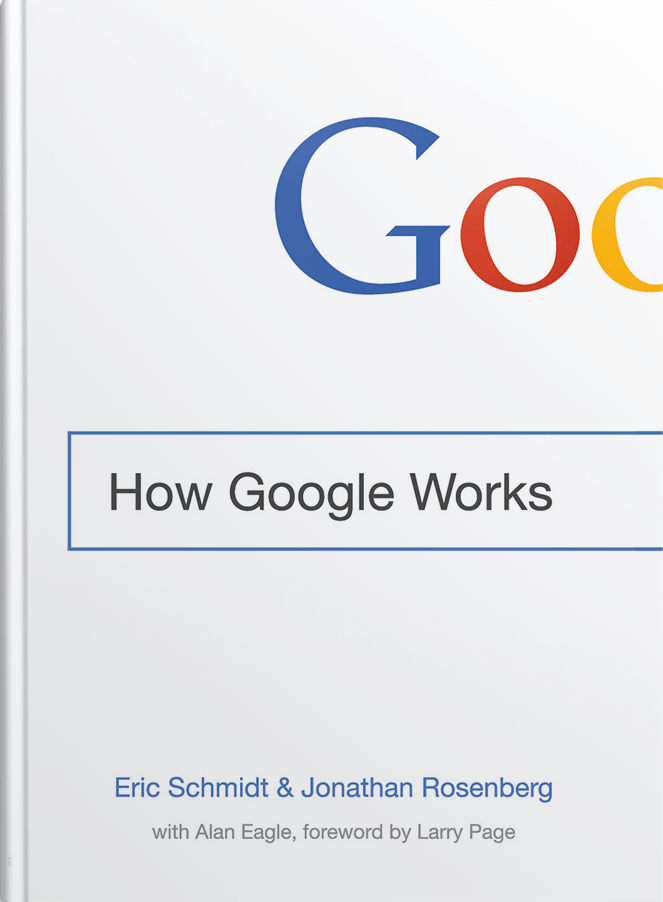
How Google Works by Eric Schmidt & Jonathan Rosenberg, with Alan Eagle. Image source: howgoogleworks.net
Convention
Regular texts are my words, which is not many. Italic texts and blockquotes are citations from the book. Some of them are cited by the authors.
How Google Works
The only way to succeed in business in the twenty-first century is to continually create great products, and the only way to do that is to attract smart creatives and put them in an environment where they can succeed at scale.
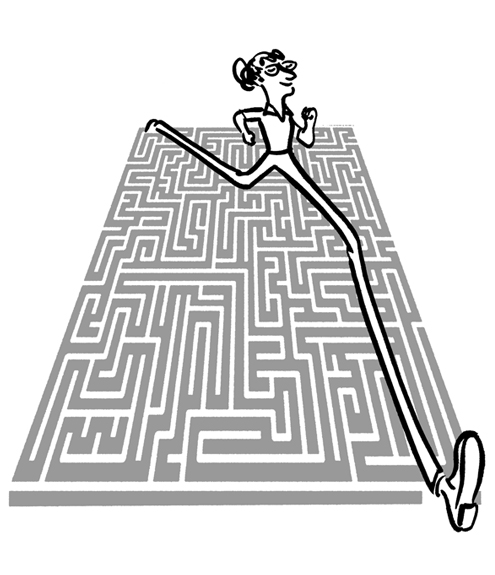
The smart creative. (Illustration in the book)
We have long felt that the start-up model, with small, autonomous teams located in one office led by passionate founders, is the most effective way to achieve remarkable new things (or fail quickly in the effort).
Dependence on process, no matter how well intentioned, squelches start-ups and the start-up spirit.
Introduction
In the old world, you devoted 30 percent of your time to building a great service and 70 percent of your time to shouting about it. In the new world, that inverts.
Product development has become a faster, more flexible process, where radically better products don’t stand on the shoulders of giants, but on the shoulders of lots of iterations. The basis for success then, and for continual product excellence, is speed.
If you can’t tell someone how to think, then you have to learn to manage the environment where they think. And make it a place where they want to come every day.
Hire enough great people, and the resulting intellectual mixture will inevitably combust into creativity and success.
Culture
Believe your own slogans
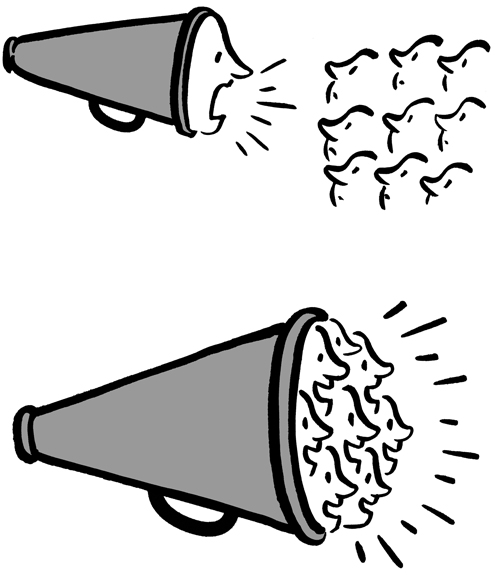
Believe your own slogans. (Illustration in the book)
Google’s culture focuses on people.
Smart creatives, though, place culture at the top of the list. To be effective, they need to care about the place they work. This is why, when starting a new company or initiative, culture is the most important thing to consider.
Once established, company culture is very difficult to change, because early on in a company’s life a self-selection tendency sets in.
At Google “it doesn’t matter who you are, just what you do.”
You want to invest in the people who are going to do what they think is right, whether or not you give them permission.
Dissent must be an obligation, not an option.
There is no perfect organizational design, don’t try to find one.
About knaves:
The character of a company is the sum of the characters of its people, so if you strive for a company of sterling character, that is the standard you must set for your employees. There is no room for knaves. And generally, in our experience, one a knave, always a knave. (Tom Peters: “There is no such thing as a minor lapse of integrity.”)
There are tipping points in knave density. It approaches a critical mass - which is smaller than you think - and people start to believe they need to be knave-like to succeed, which only exacerbates the problem. Smart creatives may have a lot of good traits, but they aren’t saints, so it’s important to watch your knave quotient.
About work-life balance:
For many people, work is an important part of life, not something to be separated.
Give your smart creatives control, and they will usually make their own best decisions about how to balance their lives.
We encourage people to take real vacations, although not to promote “work-life balance.” If someone is so critical to the company’s success that he believes he can’t unplug for a week or two without things crashing down, then there is a larger problem that must be addressed.
Strategy
Businesses should be built on a strong set of strategic principles, not an MBA-style plan that’s bound to fail.
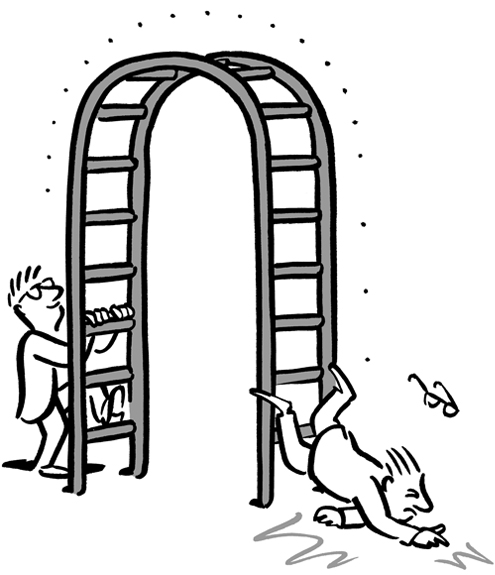
Your plan is wrong. (Illustration in the book)
A technical insight is a new way of applying technology or design that either drives down the cost or increases the functions and usability of the product by a significant factor. The result is something that is better than the competition in a fundamental way. The improvement is often obvious; it doesn’t take a lot of marketing for customers to figure out that this product is different from everything else.
^ I like that approach.
Most of Google’s successful products have been based on strong technical insights, while most of the less successful ones lacked them.
Giving the customer what he wants is less important than giving him what he doesn’t yet know he wants.
About competition:
Don’t follow competition.
If you focus on your competition, you will never deliver anything truly innovative. While you and your competitors are busy fighting over fractions of a market-share point, someone else who doesn’t care will come in and build a new platform that completely changes the game.
In general I think there’s a tendency for people to think about the things that exist. Our job is to think of the thing you haven’t though of yet that you really need.
As Nietzche wrote in “Thus Spake Zarathustra”: “You must be proud of your enemy; then your enemy’s successes are also your successes.” Be proud of your competitors. Just don’t follow them.
Talent
Hiring is the most important thing you do.
We want to hire the best minds available, because we believe there is a big difference between people who are great and those who are good, and we will do everything we can to separate the two.
A workforce of great people not only does great work, it attracts more great people. The best workers are like a herd: They tend to follow each other. Get a few of them, and you’re guaranteed that a bunch more will follow.
Favoring specialization over intelligence is exactly wrong, especially in high tech.
When considering candidates for a role, favor the ones with a track record of learning new things over the ones with a track record in that particular role.

Hire learning animals. (Illustration in the book)
In a peer-based hiring process, the emphasis is on people, not organization. The smart creatives matter more than the role; the company matters more than the manager.
The urgency of the role isn’t sufficiently important to compromise quality in hiring. In the inevitable showdown between speed and quality, quality must prevail.
We would rather our hiring process generate more false negatives (people we should have hired but didn’t) than false positives (we shouldn’t have hired, but did).
Hire them not for the knowledge they possess, but for the things they don’t yet know.
If you think your abilities are fixed, you’ll set for yourself what she calls “performance goals” to maintain that self-image, but if you have a growth mindset, you’ll set “learning goals” - goals that’ll drive you to take risks without worrying so much about how, for example, a dumb question or a wrong answer will make you look. You won’t care because you’re a learning animal, and in the long run you’ll learn more and scale greater heights.
About passion:
Passionate people don’t wear their passion on their sleeves; they have it in their hearts. They live it.
If someone is truly passionate about something, they’ll do it for a long time even if they aren’t at first successful. Failure is often part of the deal.
About recruitment:
Recruiting is everyone’s job.
Recruiters can manage the process, but everyone should be recruited for recruiting.
The interview is where you truly learn about a person - it is far more important than the résumé.
About promotion:
Promotions have a company-wide impact, so they are too important to be left in the hands of individual managers.
Google’s hiring dos and don’ts
Hire people who are smarter and more knowledgeable than you are. Don’t hire people you can’t learn from or be challenged by.
Hire people who will add value to the product and our culture. Don’t hire people who won’t contribute well to both.
Hire people who will get things done. Don’t hire people who just think about problems.
Hire people who are enthusiastic self-motivated, and passionate. Don’t hire people who just want a job.
Hire people who inspire and work well with others. Don’t hire people who prefer to work alone.
Hire people who will grow with your team and with the company. Don’t hire people will narrow skill sets or interests.
Hire people who are well rounded, with unique interests and talents. Don’t hire people who only live to work.
Hire people who are ethical and who communicate openly. Don’t hire people who are political or manipulative.
Hire only when you’ve found a great candidate. Don’t settle for anything else.
Decisions
The process by which you reach the decision, the timing of when you reach it, and the way it is implemented are just as important as the decision itself.
We don’t seek to convince bay saying “I think.” We convince bay saying “Let me show you.”

Decide with data. (Illustration in the book)
Most conference room at Google have two projectors. One of them is for videoconferencing with other offices or for projecting meeting notes. The other is for data.
Slides should not be used to run a meeting or argue a point. They should just contain the data, so that everyone has the same facts. If the data is wrong or not relevant, you can’t fix it with fancy slides.
The right decision is the best decision, not the lowest common denominator decision upon which everyone agrees. And it’s not always your solution.
About consensus and dissent:
To achieve true consensus, you need dissent.
If everyone is thinking alike, then somebody isn’t thinking.
The job is to make sure everyone’s voice is heard, regardless of their functional role.
If someone truly have nothing to say, in which case maybe they shouldn’t be at the meeting in the first place.
Do your best to surface all potential dissent early in the process; there is a natural (and valid) bias toward rejecting dissent the later it surfaces in the decision-making process.
Ensure that everyone who was involved does one of two things: disagree but commit, or escalate publicly.
About meeting:
- Meeting should have a single decision-maker/owner.
- Even if a meeting is not a decision-making meeting - for example it’s designed to share information or brainstorm solutions - it should have a clear owner.
- The decision-maker should be hands on. He or she should call the meeting, ensure that the content is good, set the objectives, determine the participants, and share the agenda (if possible) at least twenty-four hours in advance. After the meeting, the decision-make (and no one else) should summarize decisions taken and action items by email to at least every participant - as well as any others who need to know - within forty-eight hours.
- Meetings should be easy to kill.
- Meetings should be manageable in size. No more than eight people, ten at stretch. Everyone in the room should be able to give their input. If more people need to know the result of the meeting, make sure you have a process for communicating it rather than bringing them in as observers, which lowers the quality of the meeting and people’s ability to talk openly.
- Attendance at the meeting is not a badge of importance. If you aren’t needed, leave, or better yet, excuse yourself ahead of time. Fewer people is almost always better.
- Timekeeping matters. Begin meetings on time. End them on time. Leave enough time at the end to summarize findings and action items.
- If you attend a meeting, attend the meeting. Multitasking doesn’t work. If you are in a meeting and using your laptop or phone for something not related to the meeting, it’s obvious your time is better spent elsewhere. Everyone attending a meeting should focus on the meeting, not other work. And if people have so many meetings that they can’t got work done, then there is a simple solution: Prioritize and go to fewer meetings.
When you are considering something that is fundamental to the existence of the company, you should meet everyday.
About action:
If you’re not sure if a course of action is right, the best thing you can do is try it out and then correct course.
Exhibit to bias for action, to cut off debate and analysis that is no longer valuable, and start moving the team to rally around the decision. But don’t be a slave to a sense of urgency. Maintain flexibility until the last possible moment.
Communications
Default to open.

Default to open. (Illustration in the book)
A parsimonious approach to spreading information may have been successful when people were hired to work, in the Internet Century you hire people to think.
We trust our employees with all sorts of vital information, and they honor that trust.
No matter what a person’s job is, they should be encouraged to have opinions about the business, industry, customers and partners, and different cultures.
It must be safe to tell the truth
Good news will be just as good tomorrow, but bad news will be worse. That’s why you must make it safe to ask the tough questions and to tell the truth at all times, even when the truth hurts.
Know the details
If someone is in charge of a business and can’t rattle off the key issues she faces in a matter of ten seconds, then she’s not up to the job. A hands-off approach to leadership doesn’t cut it anymore. You need to know the details.
Review yourself
Make sure you would work for yourself. If you are so bad as a manager that you as a worker would hate working for you, then you have some work to do. The best tool we have found for this is the self-review: At least once per year, write a review of your own performance, then read it and see if you would work for you. And then, share it with the people who do in fact work for you.
Others
It’s easier to summarize something in black and white vs in shades of gray.
To be a thought leader, you have to have a thought.
When you start a new position, for the first three weeks don’t do anything. Listen to people, understand their issues and priorities, get to know and care about them, and earn their trust. So in fact, you are doing something: You are establishing a healthy relationship.
Email wisdom
- Respond quickly.
- When writing an email, every word matters, and useless prose doesn’t. Be crisp in your delivery.
- Clean out your inbox constantly.
- Handle email in LIFO order (Last In First Out). Sometimes the older stuff gets taken care of by someone else.
- When you get a note with useful information, consider who else would find it useful.
- When you use the bcc (blind copy) feature, ask yourself why.
- Don’t yell. If you need to yell, do it in person. It is FAR TOO EASY to do it electronically.
- Make it easy to follow up on requests.
- Help your future self search for stuff.
Innovation
What is innovation?
Innovation: It’s the next big thing.
For something to be innovative it needs to offer new functionality, but it also has to be surprising. If your customers are asking for it, you aren’t being innovative when you give them what they want; you are just being responsive. That’s a good thing, but it’s not innovative.
Think 10X, not 10%. Global scale is available to just about everyone. But too many people are stuck in the old, limited mindset.
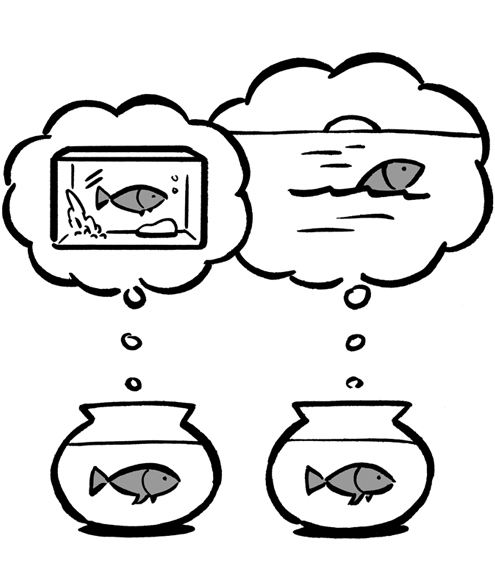
Think 10X, not 10 percent. (Illustration in the book)
Perhaps it’s human nature, or just corporate nature, but most people tend to think incrementally rather than transformationally or galactically.
We aren’t trying to improve on an existing way of doing something, rather we want to start over.
About building product
New ideas are never perfect right out of the chute, and you don’t have time to wait until they get there. Create a product, ship it, see how it does, design and implement improvements, and push it back out. Ship and iterate. The companies that are the fastest at this process will win.
Iterate very quickly and to establish metrics that help you judge if, with each iteration, you are getting closer to success.
Focus on the user…
User trust is just as important as dollars, euros, pounds, yen, or any other currency. Product excellence is the only way for a company to be consistently successful, so our prime directive when it comes to product strategy is to focus on the user.
Users are more empowered than ever, and won’t tolerate crummy products.
We will always do what’s right for the user, and we trust that our smart creatives will figure out how to make money from it. It could take a while, so sticking it out requires a lot of confidence.
About limitations
When you want to spur innovation, the worst thing you can do is overfund it.
The human race built most nobly when limitations were greatest.
About people
Innovative people do not need to be told to do it, they need to be allowed to do it. In other words, innovation has to evolve organically.
If you want to hire great people and have them stay working for you, you have to let them make a lot of decisions, and you have to be run by ideas, not hierarchy. The best ideas have to win, otherwise good people don’t stay.
Fail well
Any failed project should yield valuable technical, user, and market insights that can help inform the next effort.
It’s very hard to completely fail when you think big, since you can always salvage something of value from a project with big goals.
It helps to see failure as a road and not a wall.
Good judgment comes from experience; experience comes from bad judgment.
Management’s job is not to mitigate risks or prevent failures, but to create an environment resilient enough to take on those risks and tolerate the inevitable missteps.
Some things benefit from shocks; they thrive and grow when exposed to volatility, randomness, disorder, and stressors and love adventure, risk, and uncertainty.
Conclusion
Imagine the unimaginable.
Most companies fail because they get too comfortable doing what they have always done, making only incremental changes. And that is especially fatal today, when technology-driven change is rampant. So the question to ask isn’t what will be true, but what could be true.
Any company that wants to build a new venture needs to ask itself the question: Do I go to the smart creatives, or find a way to get them to come to me?
Big problems are information problems
With enough data and the ability to crunch it, virtually any challenge facing humanity today can be solved.
Infinite data and infinite computing power create an amazing playground for the world’s smart creatives to solve big problems.
The role of government
If data empirically show that a new way of doing things is better than the old way, then the role of government isn’t to prevent change but to allow the disruption to occur.
The next smart creative
Given that no business wins forever, it is inevitable.
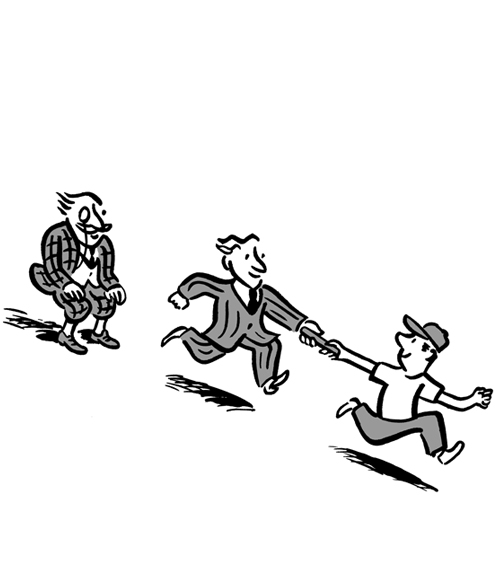
The next smart creative. (Illustration in the book)
50 Ideas [1]
Just summary the highlights:
What’s different now?
- Three converging technology platforms - Internet, mobile, and cloud - are transforming virtually every business sector.
- This transformation is happening at an unprecedented speed, and it is accelerating.
- The tools of innovation have been democratized.
- The balance of power has shifted from companies to customers, and expectations are skyrocketing.
- Individuals and small teams can have a huge impact.
- Product people are more valuable than business people.
- Most companies today are designed and run to minimize risk, not maximize speed.
- The only way for businesses to consistently succeed is to attract the best smart creatives and create an environment where they can thrive at scale.
Company culture
- Define your culture early.
- Build around small teams.
- Keep them crowded.
- Working from home kills innovation.
- Listen to the best ideas, not the hippos. (A hippo is the highest paid person’s opinion)
- Organize the company around the people whose impact is the highest.
- Do all re-orgs in a day.
- Exile knaves but fight for divas.
- Overwork people in a good way.
- Cultivate fun, even if (especially if) it comes at management’s expense.
Smart strategy, built for long-term success
- Businesses should be built on a strong set of strategic principles, not an MBA-style plan.
- Superior products start with unique technical insights.
- Optimize for growth.
- Know your competition, but don’t copy it.
- Ask the hardest questions.
Hiring
- Hiring is the most important thing you do.
- Interviewing is the most important skill you can develop.
- Hire learning animals, not specialists.
- Check your biases at the door.
- Make hiring and promotion decisions by committee, based on data.
- Reward top performers disproportionately.
- Force the best people to rotate.
Making decision
- Consensus isn’t about getting everyone to agree; it’s about making the best decision for the company and getting everyone to rally about it.
- Make all decisions with data.
- For the most important decisions, meet every day.
- You’re both right.
- Every meeting needs an owner.
- Everyone needs a coach.
Communication
- Default to open.
- Be an effective router.
- Start conversations. A leader’s job isn’t to hoard information, it is to route it as quickly and efficiently as possible.
- Repetition doesn’t spoil the prayer. When in doubt, over-communicate.
- Value relationships over process and hierarchy.
Innovation
- The CEO should be the CIO (Chief Innovation Officer). The CIO position usually fails because it doesn’t have enough power to create an innovative culture and environment. The CEO is the only person with this power.
- Think 10X, not 10%.
- Empower smart creatives over managers.
- Set unattainable goals and share them widely.
- Optimize for speed.
- Fail well.
- Imagine the unimaginable.
- We are technology optimists.
Related articles
2004 Founders’ IPO Letter [2]
Google is not a conventional company.
About public ownership
The standard structure of public ownership may jeopardize the independence and focused objectivity that have been most important in Google’s past success and that we consider most fundamental for its future.
As a private company, we have concentrated on the long term, and this has served us well. As a public company, we will do the same.
In the transition to public ownership, we have set up a corporate structure that will make it harder for outside parties to take over or influence Google. This structure will also make it easier for our management team to follow the long term, innovative approach emphasized earlier.
New investors will fully share in Google’s long term economic future but will have little ability to influence its strategic decisions through their voting rights.
About short and long term
Our goal is to develop services that significantly improve the lives of as many people as possible. In pursuing this goal, we may do things that we believe have a positive impact on the world, even if the near term financial returns are not obvious.
If opportunities arise that might cause us to sacrifice short term results but are in the best long term interest of our shareholders, we will take those opportunities.
We will not shy away from high-risk, high-reward projects because of short term earnings pressure.
We will optimize for the long term rather than trying to produce smooth earnings for each quarter.
A management team distracted by a series of short term targets is as pointless as a dieter stepping on a scale every half hour.
Serving our end users is at the heart of what we do and remains our number one priority.
Google’s Larry Page on why moon shots matter [3]
Thousand-percent improvement requires rethinking problems entirely, exploring the edges of what’s technically possible, and having a lot more fun in the process.
If you’re not doing some things that are crazy, then you’re doing the wrong things.
There are all these opportunities to make people’s lives better. Tech companies are attacking 1 percent of them. That leaves 99 percent virgin territory.
References
I highly recommend that you read these articles in detail. There are great information in them related to the book.
- How Google Works: 50 Ideas
- 2004 Founders’ IPO Letter
- Google’s Larry Page on why moon shots matter
- An Owner’s Manual by Warren E. Buffett
- howgoogleworks.net